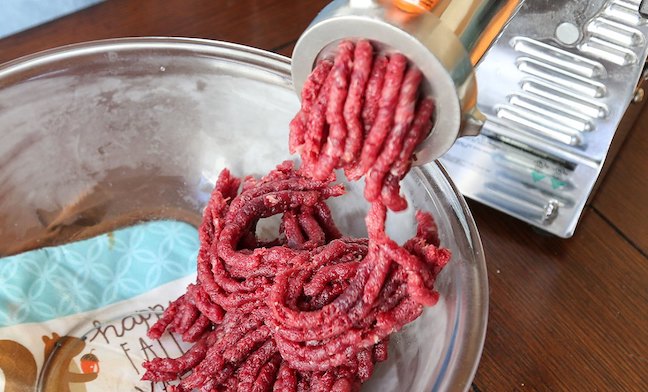Venison, Other Wild Game Meat: Is It Really Organic?

Buying organic meat at the grocery store is a booming business; while some families haven’t had the option to eat healthier protein, hunting families have been eating organic for a long, long time.
We hunters like to claim that wild game is organic. We’ll post a photo of dinner on Facebook, thumb our noses, and tell our non-hunting friends that wild game is the “original organic.” There’s nothing better than hunting for our own food. While I heartily agree with the second sentiment, I’ve learned that the first claim is a tad more complicated.
The truth is your wild game may or may not be completely organic. As someone who lives in the Midwest, it’s hard to turn a blind eye to the fact that our whitetails love GMO corn. It’s the same corn that feeds the cattle industry, with the same pesticides sprinkled on top. But how much does that really matter?
Wild game is delicious. Whether organic or not, wild game we harvest and process ourselves is without a doubt far more healthy and gratifying than most commercial-raised meat from the grocery store. These animals were allowed to live freely before we ever set eyes on them, and that is worth just as much as the best organic pigs or chickens were born and raised in enclosed spaces.
While I can’t comfortably label my venison dinners 100 percent organic, as far as industry standards go, the benefits of eating wild game outweigh the obsession with organic foods. I can proudly claim the following.
Free Range
“Free range” is another hot phrase of the day, and nothing is as free range as wild game. Chickens don’t cross county lines, except in a poultry truck, but your whitetail, elk, moose or muley might have. I believe that happy animals make for tasty animals. Free to roam, feed, sleep and mate as nature intended, game animals lived their lives before they reached our tables.
>>Wanna a recipe idea for your catch or harvest? Click Here
Along with taking a responsible shot and providing the animal a quick death, meat obtained through hunting is humane and ethical. Wild animals don’t endure that long haul to the slaughterhouse in the back of a truck. Skillfully hunted animals shouldn’t know what hit them.
No Hormones and Antibiotics
Most likely, the animals you hunt had no prior physical contact with humans, let alone treated with artificial growth hormones and/or antibiotics. They are as they are depending on their genetics and diet, and the taste and quality of their meat will reflect the quality of their lives.
Wild animals also have no use for antibiotics. They were not born and raised in cramped, muddy yards where disease and germs may grow rampant.
No Carbon Monoxide and Salt Solutions
One of the greatest benefits of hunting your own food is being able to maintain complete control over its processing. So much meat at the grocery store has been injected with salt solutions and carbon monoxide to artificially increase weight and improve appearance, shelf life, taste and profit. Unable to move and live freely, I find most mass-produced beef, pork and chicken rather bland. And who knows how long that piece of steak has really been sitting on the shelf.
Lean and Healthy
Fat is flavor, but if you’re looking to eat healthy, wild game is the leaner option. Don’t get me wrong; I enjoy a fatty Wagyu beefsteak as much as the next carnivore, but if I ate it everyday I would have a heart attack by 50. Wild game, on the other hand, is the day-to-day, healthy protein at my house, provided we don’t wrap it in bacon or drown it in gravy too often.
White-tailed deer, for example, live in a natural environment. While they do love to raid farmer’s fields for corn and soybeans, they also have plentiful access to fresh grass, plants, fruits and nuts. In addition to an active life, this variable diet accounts for venison’s lower levels of saturated fat and higher Omege-3 fatty acids compared to farm-raised beef.
Three ounces of a white-tailed deer contains approximately 149 calories, 23.6 grams of protein and 1.4 grams of fat, while three ounces of beef filet mignon contains 267 calories, 26 grams of protein and a whopping 17 grams of fat. (Source: https://www.builtlean.com/2016/03/25/wild-game-meats/)
Lower Cost
Depending on where you live, eating wild game can be less expensive than buying groceries. In Nebraska, a resident deer tag only costs $37, and from just one deer, I can stretch out the meat to get many meals. I know families who eat deer year round. If you have access to land and can shoot several deer a year, venison is a healthy, inexpensive protein to keep a growing family well fed.
Recreational and Educational Opportunity
Not only does wild game provide nutritional and ethical benefits over commercial meat, its recreational value is priceless. Hunting comes with spending time outdoors, recharging and allowing yourself a break from the hustle and bustle of everyday life. If you have kids, hunting also is an opportunity to teach your children about conservation and a greater appreciation of where food comes from. Besides, how many other vacations result in filling one’s freezer?
You may also like
-
Buffalo Cauliflower using CanCooker by Seth McGinn’s
-
Where Wolves and Wisconsin Stand
-
Keep Wildlife Wild: Know What To Do If You Encounter Young Wild Animals
-
How to Avoid Ticks and Tick-Borne Diseases While in the Woods
-
Spring hearing begins — and more news in your latest Manitowoc outdoors report by Bob Schuh